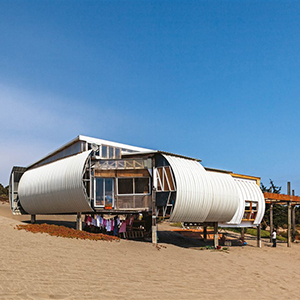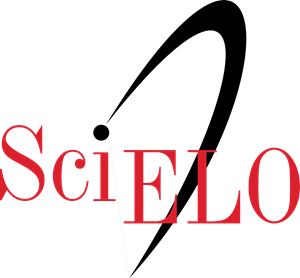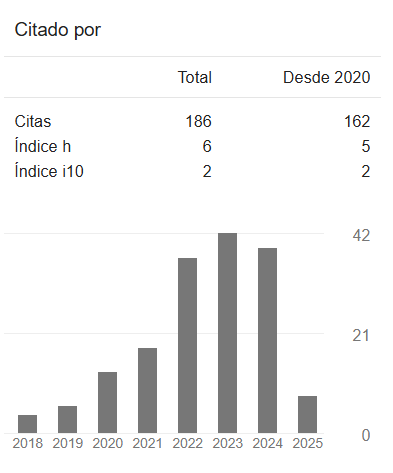Structure, technique and space: Hospedería Colgante in the Open City of Ritoque (2004-2007)
DOI:
https://doi.org/10.35305/23626097v10i19.420Keywords:
domestic space, structural grid, formal prefigurationAbstract
The need to link more closely architecture teaching to the territory led the academics of the School of Architecture of the Pontificia Universidad Católica de Valparaíso to the creation of Open City in 1971. It was conceived as a park-laboratory where professors and students could experience the construction of works in their true dimensions.
More than 50 years after its foundation, this article analyzes the process of construction and evolution of Hospedería Colgante, the last project of the complex. It was built between 2004 and 2007. Departing from the review of the constructive process and regarding spatial condition as the interpretation criterion, it is questioned how domestic space conception can be the result of the application of a technical solution rather than the formal basis of prefiguration.
The hypothesis guiding the analysis is that the spatial condition of Hospedería Colgante is the product of a structural experiment, and the interior space is the unifying element of the technical components that make it up. The rapid execution and the low cost of the construction give the work the merit of functioning as a prototype of contemporary housing.
Downloads
Metrics
References
Braghini, A. (2023). El espacio como interpretación de la arquitectura. El IAU de la Universidad Nacional de Tucumán (1947-1952) y el IA de la Universidad Católica de Valparaíso (1952-1960) (Tesis de doctorado no publicada). Pontificia Universidad Católica de Chile, Santiago.
Browne, E. (1985). Ciudad Abierta en Valparaíso. Summa, 214, 74-81.
Cáraves S. P. (2007). La Ciudad Abierta de Amereida Arquitectura desde la Hospitalidad (Tesis de doctorado). Departamento de Proyectos Arquitectónicos, Escuela Técnica Superior de Arquitectura de Barcelona, Universidad Politécnica de Cataluña.
EAD PUCV. (1992). Ciudad Abierta de Ritoque. Revista Arquitectura Panamericana, 1, 130-141.
Espósito, G. F. y Luza, C. D. (2015). Talleres de Obra en Ciudad Abierta de Amereida. AUS, 18, 37-43.
Forty, A. (2000). Words and buildings: A vocabulary of modern architecture. Nueva York, Estados Unidos: Thames & Hudson.
Ivelic, B. y Cruz, F. (1992). UCV, Escuela de Arquitectura: Casa de Los Nombres. C.A., 87, 50-53.
Izquierdo, L. (1992). Comentario crítico. ARQ, 17, 35.
Mihalache, A. (2006). Huellas de Ciudad Abierta. ARQ, 64, 24-27.
Millán-Millán, P. (2019). De la Poesía a la experimentación: la Hospedería del Errante en Ciudad Abierta (Quintero, Chile). Proyecto, Progreso, Arquitectura, 20, 106-119.
Moneo, R. (2012). L’altra modernità: considerazioni sul futuro dell'architettura. Milán, Italia. Marinotti.
Nervi, P. L. (1951). El lenguaje arquitectónico. Buenos Aires, Argentina. Est. Graf. Platt.
Pendleton, A. M. (1996). The road that is not a road and the Open City, Ritoque, Chile. Cambridge, USA: MIT Press.
Pérez de Arce, R. y Pérez, O. F. (2003). Escuela de Valparaíso: grupo ciudad abierta. Santiago de Chile. Editorial Contrapunto.
Zegers, C. (1998). La ética de los materiales. ARQ, 39, 16-17.

Published
How to Cite
Issue
Section
License
Copyright (c) 2023 A&P Continuidad

This work is licensed under a Creative Commons Attribution-NonCommercial-ShareAlike 4.0 International License.
Open access policy
A&P Continuidad is a non-profit and open access publication. According to Mexico Declaration on Cultural Policies, the journal distribution is submitted to Creative Commons Attribution-Noncommercial-ShareAlike 4.0 International Public License (CC BY-NC-SA). “Neither the commercial use of the original work nor that of the possible derivative works are allowed. The distribution of derivative works should be submitted to the license regulating the original work. This license is not free.”
A&P Continuidad authorizes the partial or full reproduction of texts and graphs provided that the source is cited. Authors are exclusively responsible for the criteria expressed in the articles which do not necessarily reflect the opinion of the Editorial Committee or that of the Direction Board. The copyright of the published articles pertains to their authors or publishers.
Transfer of rights
The acceptance of an article to be published implies the author’s transfer of rights to the journal. Authors continue to have the right to use the material in future books or publications, approve or veto the republication of their works as well as the rights related to patents or other rights. Transfer of rights form may be downloaded here.





























 This OJS site and its metadata are under a
This OJS site and its metadata are under a 

